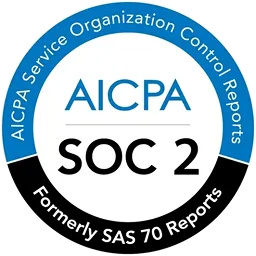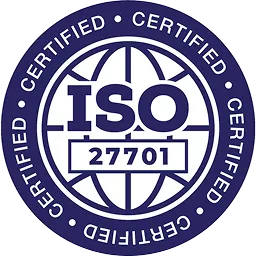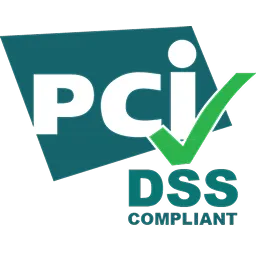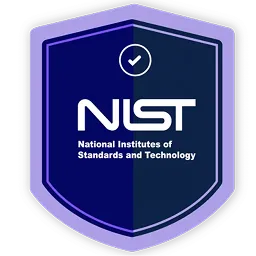Achieving SOC 3 compliance sets your organization apart from competitors. It demonstrates your commitment to maintaining stringent security measures, which can be a deciding factor for potential clients when choosing between service providers. But what is SOC 3 compliance, and how does it help your organization's security? Let's take a closer look.
Would you entrust your crucial data with any random organization? No, right? Similarly, before partners, stakeholders, or clients hand over their valuable data to any service organization, they want reassurance that it will be handled carefully.
But how can service organizations prove their commitment to data security and privacy? This is where SOC 3 compliance comes into the picture. But what is SOC 3 compliance?
What Is SOC 3?
SOC 3, which stands for service organization control, is a regulatory compliance introduced by the American Institute of Certified Public Accountants (AICPA). This security compliance mandates service organizations to strengthen their internal controls and meet Trust Services Criteria, including data security, availability, process integrity, confidentiality, and privacy.
Note: Organizations need to get a SOC 3 report (a formal report showcasing all the necessary actions that organizations take to safeguard data) from auditors to demonstrate their compliance with SOC 3.
Who Does SOC 3 Compliance Apply To?
SOC 3 compliance applies to any business that stores and processes sensitive customer data, such as health records, financial information, or personally identifiable data. This applies to organizations across all industries, including healthcare, finance, SaaS, PaaS, and retail.
But why is it important to adhere to SOC 3 compliance?
Why Does SOC 3 Matters?
There are three major reasons why you should consider getting SOC 3 reports:
- Enhances Security Measures: To comply with SOC 3 compliance, organizations must have effective security controls in place to protect sensitive customer data. This further helps prevent data breaches and unauthorized access, reducing the risk of financial losses and reputational damage to your organization.
- Demonstrates Trustworthiness: Achieving SOC 3 compliance demonstrates to customers, partners, and stakeholders that an organization takes data security seriously. It assures the organization's systems and processes meet industry standards for protecting sensitive information.
- Market Access and Business Opportunities: SOC 3 compliance can open new markets and business opportunities. Many customers require proof of SOC 3 compliance before engaging in business, so achieving compliance gives organizations a competitive edge and attracts more clients.
However, organizations often get confused between SOC 2 and SOC 3 reports because both types evaluate controls related to the same set of Trust Services Criteria (TSCs). This creates a dilemma regarding whether to obtain SOC 2 or SOC 3 reports.
Although they might have the same assessment process, they differ in terms of scope, purpose, detail, and audience.
To help you understand better about their key differences, here's a quick comparison of both reports.
Difference Between SOC 2 And SOC 3 Report
We've briefly compared SOC 2 vs SOC 3 reports based on three different parameters in tabular form for easy understanding.
But how will you know which SOC report to generate? How to choose between them?
Which SOC Report Does Your Organization's Needs?
When it comes to choosing between SOC 2 vs SOC 1 reports, it's important to consider different factors, such as which audience your organization is targeting, confidentiality concerns, and more.
For instance, if your target audience is specific clients and stakeholders who require detailed information about your organization's controls, you can provide them with SOC 2 reports. On the other hand, if you are dealing with a broader audience, including potential clients or the public, generating SOC 3 reports is a more apt choice.
However, most organizations begin with either a SOC 2 Type 1 or SOC 2 Type 2 report before pursuing a SOC 3 report. This is because you need to meet the requirements for a SOC 2 report before getting a SOC 3 report. Also, preparing for a SOC 3 audit is similar to preparing for a SOC 2 Type 2 audit. So, many organizations choose to get their SOC 2 Type 2 reports before adding a SOC 3 report.
Now, let's understand what's involved in the SOC 3 audit process.
How To Perform SOC 3 Audit?
To obtain a SOC 3 report, you must involve a third-party auditor from an AICPA-accredited firm to audit your controls. Although the specifics of the audit may vary depending on your products and services, however, the SOC 3 compliance audit process includes the following steps:
Step 1: Determining Scope
The first step is determining which criteria from the Trust Services Criteria (such as availability, processing integrity, confidentiality, and privacy) apply to specific operations. By determining this, you can address all necessary security and compliance aspects within your systems and services.
Step 2: Preparation
Once the scope is determined, the next step is to move on to preparation. This step involves implementing controls for each applicable category of the identified TSCs. It includes developing and documenting policies, procedures, and processes to meet the requirements.
Additionally, your team must gather evidence of compliance to present to the auditor during the audit process. This evidence will help ensure that the organization's systems and practices align with the established standards and criteria.
Step 3: Readiness Assessment (Optional)
Some organizations opt to conduct a readiness assessment before the formal audit. This preliminary review evaluates the effectiveness of the SOC 3 controls to ensure they meet the regulatory requirements.
The assessment can be performed internally by the organization or by the auditor. It helps identify any gaps or deficiencies in the controls, allowing organizations to address them before undergoing the formal audit.
Step 4: Formal Audit
The formal audit is an audit examination conducted by the auditor. During this stage, the auditor thoroughly assesses the organization's security controls against the relevant Trust Services Criteria (TSCs).
They review documentation, conduct interviews, and perform testing to evaluate the effectiveness of the controls. The audit aims to verify that the organization's systems and practices meet the standards outlined in the SOC 3 criteria.
Step 5: Report
Following the audit, the auditor provides the SOC 3 report. This report includes an assessment of the organization's compliance with SOC 3 criteria and briefly describes the SOC 3 controls.
It outlines the audit findings, including any identified strengths, weaknesses, or areas for improvement. The report documents the organization's commitment to security and compliance, providing stakeholders with assurance regarding its control environment.
Now that you know the steps involved in the audit process, let's understand how you can effectively prepare your organization for SOC 3 compliance.
Best Practices For Achieving SOC 3 Compliance
To achieve SOC 3 compliance successfully, service organizations can implement the following best practices:
following steps:
1: Establish a Data Security Plan
Develop clear protocols for managing data by industry standards. Define data collection, storage, and processing procedures to ensure security and compliance with legal regulations.
2: Select Relevant Trust Service Criteria
TSC covers availability, processing integrity, confidentiality, and privacy. Organizations can decide to include these additional areas in their SOC 3 audit based on their specific needs and operations.
For example, an organization that handles sensitive customer information might include confidentiality controls in the audit.
So, to enhance the likelihood of passing the audit successfully on the first attempt, organizations need to ensure that all their policies, procedures, and systems related to these selected TSCs are up-to-date and secure.
3: Choose a Qualified Auditor
Select a service auditor affiliated with the AICPA with experience with SOC audits, especially for organizations of similar size or industry, and ensure they have been recently peer-reviewed.
4: Conduct a Multiple Readiness Assessment
Conducting multiple assessments allows your team to thoroughly examine and evaluate the effectiveness of your existing controls. These assessments can identify gaps or weaknesses in your current control measures.
Additionally, these assessments help recognize any changes made to the controls that could negatively impact your SOC 3 audit success. This could include recent changes in data handling procedures or modifications in compliance policies that haven't been fully tested yet.
5: Address Identified Issues During Readiness Assessment
Address any deficiencies or gaps identified during your readiness evaluation. Implement new policies, procedures, or controls to rectify issues and strengthen your compliance posture.
6: Choose Suitable Compliance Software
Achieving SOC 3 compliance is not easy as it involves multiple steps, such as conducting audits, enforcing policies, reviewing those policies, and more. Manually performing all these tasks can lead to oversights and errors and consume a significant amount of time.
So, to streamline and simplify the compliance process, you can opt for an automated solution like Zluri.
Zluri offers an access review solution that automates the access certification process with just a few clicks. Your team can create workflows and trigger actions to review—what level of access users hold and to which all SaaS apps and data. This helps identify if any user within the organization holds access beyond their needs.
Armed with these insights, your team can take necessary actions, such as running access modification or deprovisioning workflows, to revoke unnecessary user access, and safeguarding data from potential security risks and breaches.
Additionally, this entire process can be documented and presented as evidence to auditors, demonstrating that all necessary actions were taken to protect data. This thorough audit documentation and proactive management can help attain a SOC 3 report.
Get A SOC 3 Report To Show Your Commitment Toward Data Security
In conclusion, achieving and maintaining SOC 3 compliance is not a one-time task but rather an ongoing process that demands continuous dedication. It involves various steps, such as preparation, assessment, and more, which need to be repeated periodically to maintain an up-to-date SOC 3 report. While this process can be tiresome, its benefits justify the effort invested.
SOC 3 reports help avoid non-compliance penalties and build trust among clients, partners, and the public. They demonstrate an organization's dedication to data security and privacy, which helps acquire more clients and open up business opportunities.
Furthermore, to ensure your organization successfully achieves SOC 3 compliance, you can follow the best practices and leverage automated tools like Zluri access review. This will help simplify and expedite the compliance process and strengthen your security system, which will help you acquire SOC 3 compliance without fail.








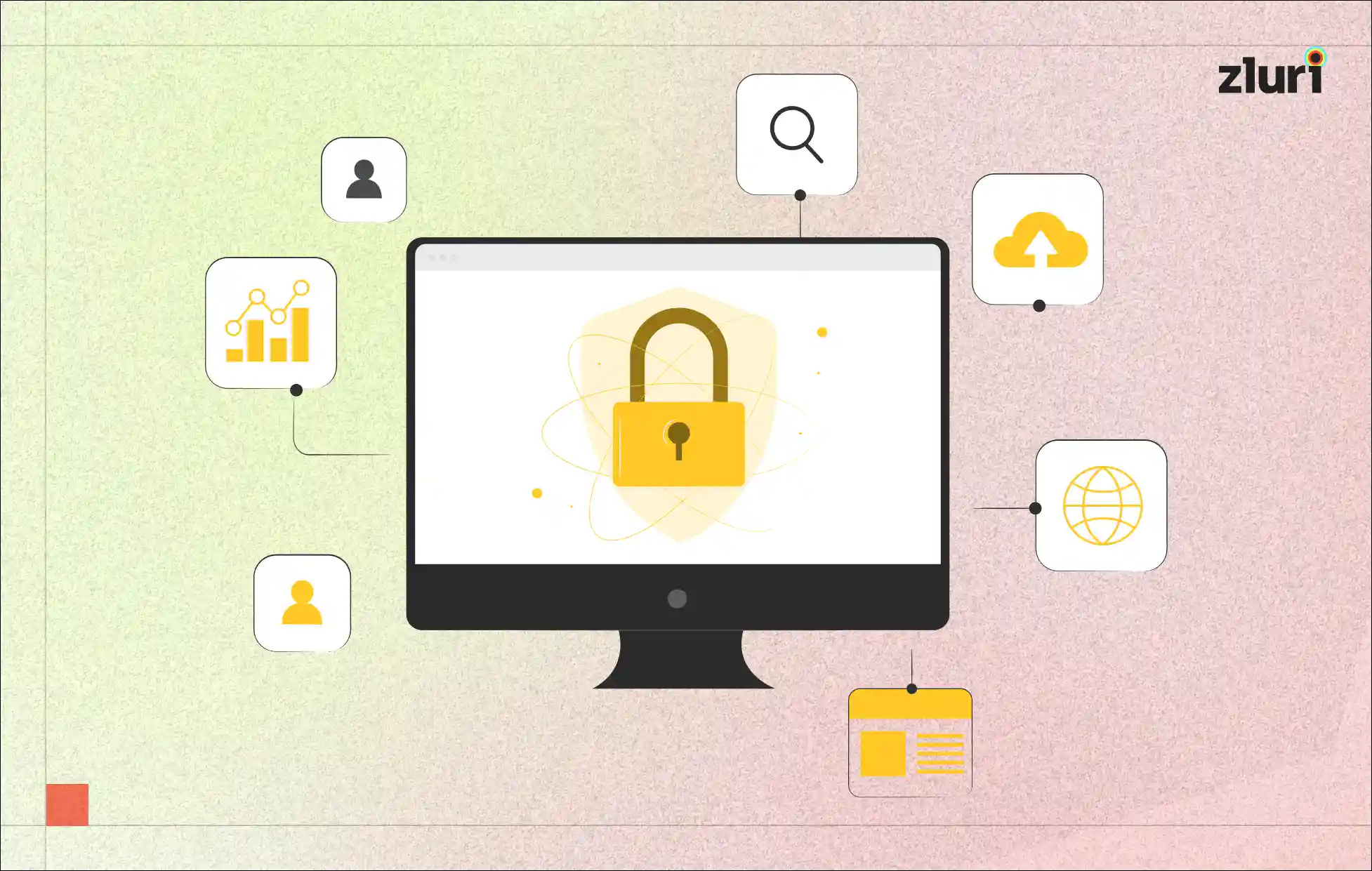
.svg)



